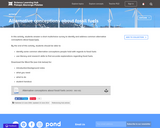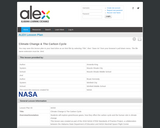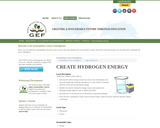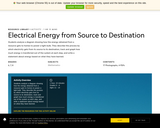
This parent guide supports parents in helping their child at home with the 8th grade Science content.
- Subject:
- Science
- Material Type:
- Reference Material
- Vocabulary
- Author:
- Kelly Rawlston
- Letoria Lewis
- Date Added:
- 10/11/2022

This parent guide supports parents in helping their child at home with the 8th grade Science content.

This resource accompanies our Rethink 8th Grade Science course. It includes ideas for use, ways to support exceptional children, ways to extend learning, digital resources and tools, tips for supporting English Language Learners and students with visual and hearing impairments. There are also ideas for offline learning.

The AirData website provides access to air pollution data for the entire United States. Users have the ability to produce reports and maps of air pollution data based on criteria that they specify.

Students answer a short multichoice survey to identify and address common alternative conceptions about fossil fuels. By the end of this activity, students should be able to identify some common alternative conceptions people hold with regards to fossil fuels and use literacy and research skills to find accurate explanations regarding fossil fuels.

This short video lesson demonstrates how cellulose, the naturally abundant tough walls of plant cells, might be the solution to scientists' search for a plentiful source of environmentally friendly fuels. Assessment and discussion questions, as well as links to additional resources, are included.

This lesson is composed of three challenges, each addressing a different aspect of how to design an efficient public bus system for a fictitious town while taking into account the benefits and drawbacks of various fuel options. In attempting these challenges, students will find that there is often more than one way to solve a problem. The purpose of these challenges is for students to reason out their own logical methods for solving a problem using math and computational skills with little initial guidance.

In this lesson, students will be reminded of the greenhouse effect. In small groups of 3-4 students, they will be given a chemical compound related to climate change to research. They will become proficient in the chemical and physical properties of the compound and proceed to research its impact in climate change and connect it to combustion or ocean acidification. The groups will conclude their work by informing their classmates about the process and explaining what we can do each day to help limit our personal production of greenhouse gases.

This video provides information about the causes and effects of Earth's changing climate, specifically focusing on wildlife populations and the impact global warming has on habitats.

Students will explore greenhouse gases, how they affect the carbon cycle and the human role in climate change.

This online game allows participants to maneuver solar panels and a wind turbine in order to provide electricity to light five homes. Background information on sources of electricity- fossil fuels, solar energy and wind energy- is also presented. This lesson is part of the Climate Kids website, a NASA education resource featuring articles, videos, images and games focused on the science of climate change.

The greenhouse effect is explained in this series of related questions and answers. This lesson is part of the Climate Kids website, a NASA education resource featuring articles, videos, images and games focused on the science of climate change.

Students will identify the need for alternative energy sources and explain how hydrogen energy might be used to address that need. They will conduct a simple experiment to describe how to use the process of electrolysis to generate hydrogen.

In this lesson, students use information and graphics to prepare digital presentations that teach others about energy topics.

Students analyze a diagram showing how the energy obtained from a resource gets to homes to power a light bulb. They describe the process by which electricity gets from its source to its destination, track and graph how much energy is transferred out of the system at each step, and write a statement about energy based on what they have learned.

Students explore real-world data to learn about electricity consumption trends worldwide. They watch a video to discover how different energy sources are transformed into electricity.

Students practice graphing data, research historical events, and analyze the graphs in this guide and the Energy Information Administration's Energy Perspectives booklet to determine and explain energy trends in the United States during the last 50 years.

Students investigate the energy sources used in students' communities.

In this activity, students will learn about energy sources by playing a game. This game demonstrates that energy, the environment and economics are closely tied - obtaining one affects the other two.

Students examine the sources of energy that are used to generate electricity. Students use maps to identify the locations of energy resources. Then, they consider how energy resources are converted into electricity and how that electricity is transmitted and delivered to people at various locations.

Students organize information about the energy released by nuclear reactions and the historical development of nuclear power. They use this information to help them debate the merits of the different methods that can be used to store nuclear waste from the production of nuclear energy.